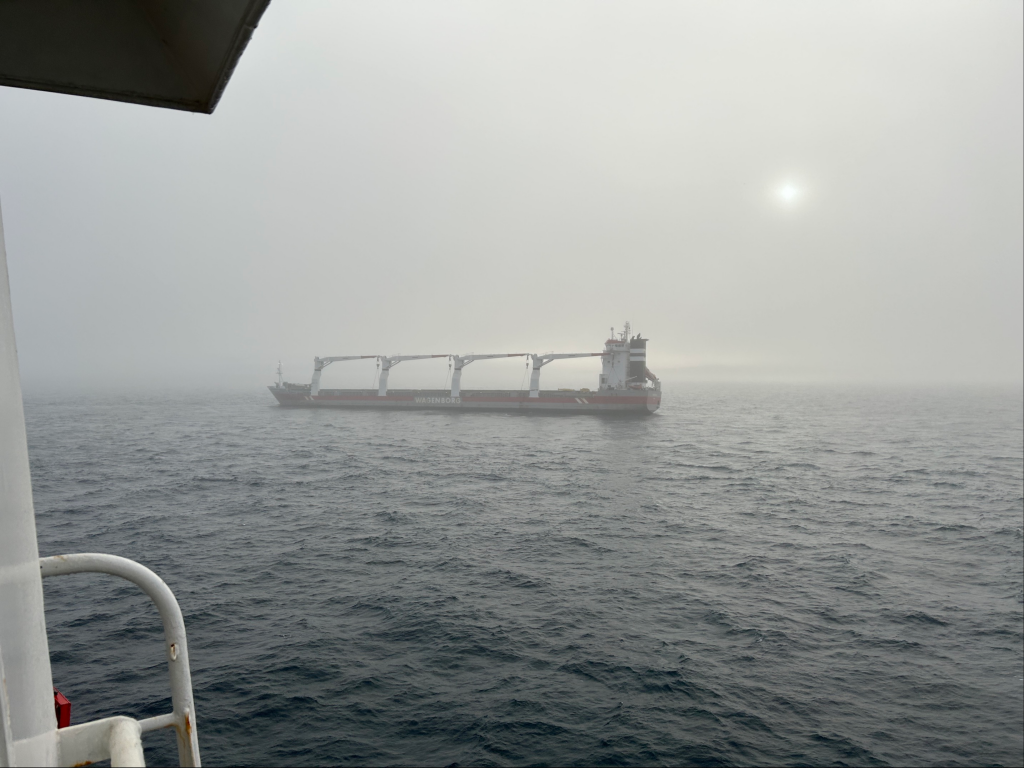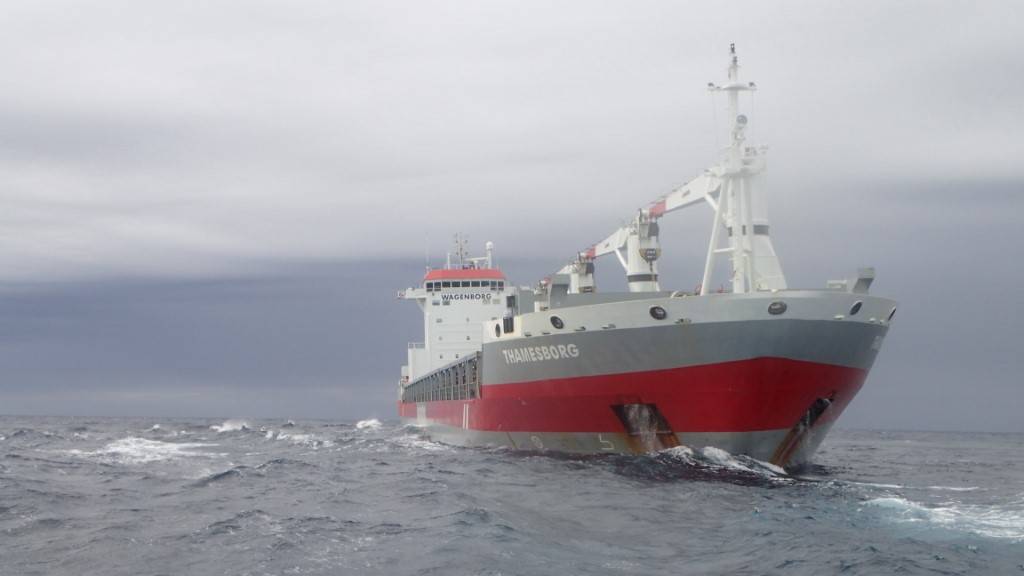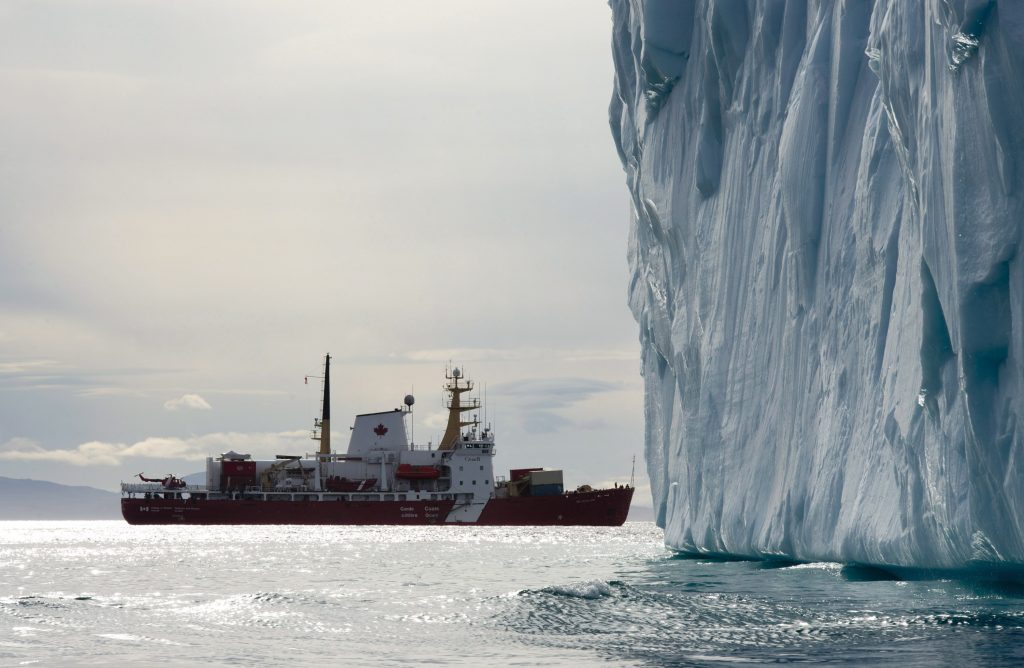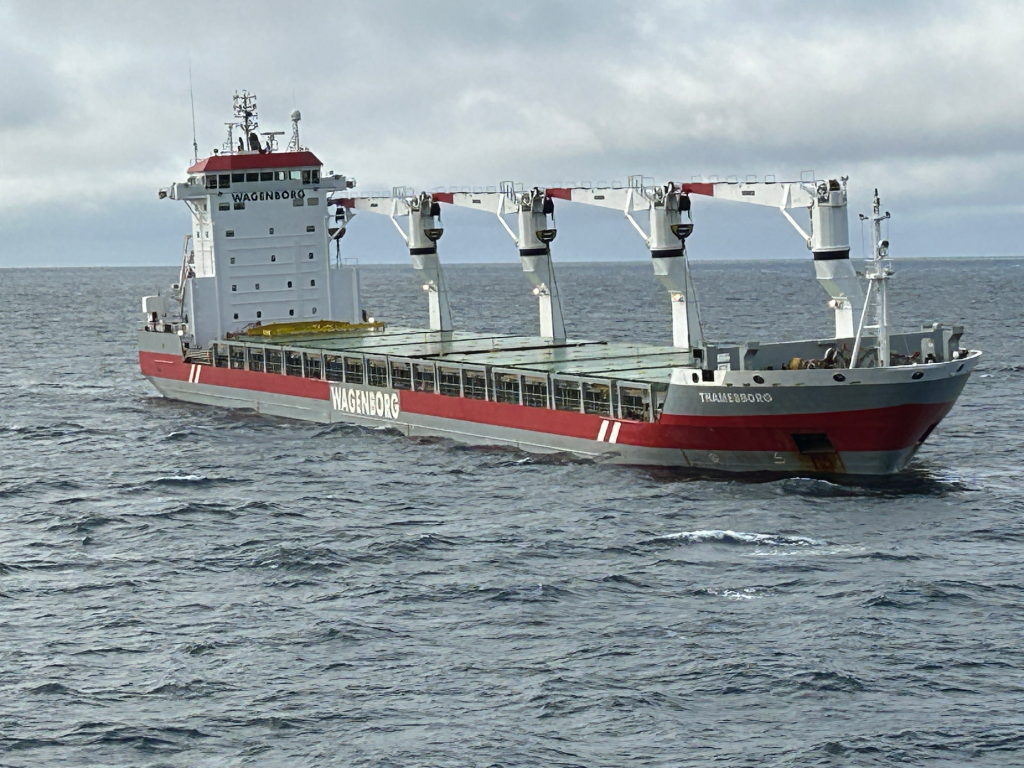Safeguards in place, but still stranded: New details on efforts to free Thamesborg before freeze-up

On paper, the European shipping company that sent the Thamesborg cargo vessel through the Northwest Passage did everything right: the ship had ice-class certification, an experienced Canadian ice pilot was on board, and the company had extensive experience of the Northwest Passage with a decade of successful Arctic transits under their belts.
But even that wasn’t enough to keep the Thamesborg from being grounded.
“All transits are undertaken with extensive planning, including the use of low-sulphur marine gas oils, a relatively slow operating speed, and enhanced navigation and communication systems,” David Solsbery, a spokesperson for Royal Wagenborg, said at a technical briefing on Monday.
“We regret that even with every known technology and safeguard in place, the grounding of Thamesborg has occurred and Wagenborg is committed to learn lessons from this incident and continue leading our industry in navigating this sea route.”
The briefing, held alongside Canadian authorities, outlined a host of new details on the complex operation to free the Dutch-flagged cargo ship, stranded in Franklin Strait since Sept. 6.
Refloat attempt this week, weather remains wild card
Wagenborg said about 4,000 tonnes of carbon-block cargo have already been transferred from the stranded vessel to two ships brought in to assist with the salvage. The move is meant to lighten the Thamesborg’s load to help with the refloat.
The first attempt will be this week after a third ship, the Estonian icebreaker MSV Botnica, arrived Oct. 3 with gear to pump water from the ship’s damaged ballast tanks and attempt a refloat.
Once freed, the Thamesborg will be inspected and escorted to a port of refuge for repairs.
All 16 people on board the ship— 15 crew and one Canadian ice pilot — remain on the vessel to coordinate with Canadian authorities and assist with the operation.

The company and Canadian authorities say they’re confident this can be achieved before freeze-up, but admitted the unpredictable Arctic weather remains the wildcard in the operation.
“Given dynamic weather and sea conditions, and the remote location, operations may need to be adapted to deliver the best outcome,” Sue McLennan, regional director of response for the Canadian Coast Guard Arctic Region,” said.
Kevin Tatryn, senior ice forecaster with the Canadian Ice Service, said the site of the grounding is currently free of sea ice, with the nearest floes 80 to 90 nautical miles west of the grounding site.
But Environment and Climate Change Canada meteorologists warned that conditions in Franklin Strait remain volatile.
“Unfortunately it is storm season up across Nunavut and we are expecting the conditions to deteriorate again on Wednesday and Thursday as the next couple of systems move through, so windy conditions and heavier snow should be on the way for Thursday,” Jesse Wagar, warning preparedness meteorologist with Environment and Climate Change Canada, said.
Daily oversight in rough conditions
No crew members were hurt in the grounding and there has been no environmental damage or pollution from the incident.
John Coyne, director for Nunavut Emergency Management, said so far, no communities have made complaints about the incident or salvage operation to the territorial government.
The Canadian Coast Guard Ship Des Groseilliers conducts daily visual checks of the Thamesborg — either by zodiac, helicopter, or by boarding the grounded vessel directly when weather allows.

On stormy days, observations are carried out from the Canadian icebreaker.
“If the weather is not cooperating, they can still monitor from the Des Groseilliers herself,” Coast Guard spokesperson Sue McClennan said. “They will just bring her a little bit closer and still be checking for marine mammals, for ice, and for observing the salvage operation.”
Investigation and detention order
An investigation into the grounding of the ship is still underway and the cause of the incident is not yet known.
Transport Canada confirmed that inspectors placed a detention order on the Thamesborg shortly after the grounding and that the ship will not leave Canadian waters until any safety or mechanical issues are addressed.
“We were undertaking a Port State Control inspection as well as a Compliance Inspection at the beginning of the incident,” Desmond Raymond, regional director of Marine Safety and Security for the Prairie and Northern Region at Transport Canada, said.

The results of that will be further reviewed and followed up on as the investigation is carried out.
“Our expectations are that all deficiencies that need to be addressed prior to the vessel exiting the Canadian Arctic…will be met.”
The department said it will continue to coordinate with the Transportation Safety Board of Canada as the investigation proceeds.
Company says it remains committed to Northwest Passage route
Royal Wagenborg said that after more than 50 successful commercial transits of the Northwest Passage since 2016, the company remains committed to Arctic shipping despite the grounding.
“One incident does not make us [think] that we have to stop in certain business,” Theo Klimp, fleet director at Wagenborg, said.
“It makes [it] that we have to improve our business. And we will.”
Questions, comments or story ideas? Contact Eilís at eilis.quinn(at)cbc.ca
Related stories from around the North:
Canada: Melting Arctic could create shipping superhighway… and a surge in emissions: study, Eye on the Arctic
Norway: Hybrid-powered electric cruise ship navigates Northwest Passage, CBC News
Russia: Governor inks deal with Chinese shipper, touts Murmansk as ‘Icy Silk Road’ hub, The Independent Barents Observer
United States: U.S. Coast Guard monitors Chinese ships in Arctic waters…again, Eye on the Arctic



